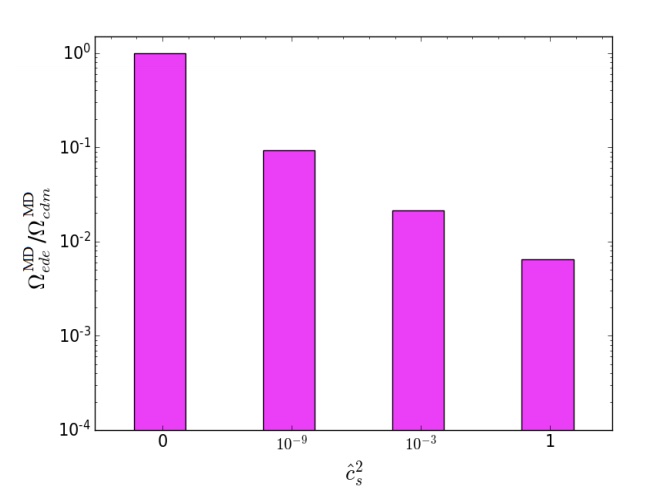Early dark energy in the pre- and postrecombination epochs
|
Authors: |
Adrià Gómez-Valent, Ziyang Zheng, Luca Amendola, Valeria Pettorino, Christof Wetterich |
| Journal: |
PRD
|
| Year: | 07/2021 |
| Download: | PRD | Arxiv |
Abstract
Dark energy could play a role at redshifts z≫O(1). Many quintessence models possess scaling or attractor solutions where the fraction of dark energy follows the dominant component in previous epochs of the Universe’s expansion, or phase transitions may happen close to the time of matter-radiation equality. A non-negligible early dark energy (EDE) fraction around matter-radiation equality could contribute to alleviate the well-known H0 tension. In this work, we constrain the fraction of EDE using two approaches: first, we use a fluid parameterization that mimics the plateaux of the dominant components in the past. An alternative tomographic approach constrains the EDE density in binned redshift intervals. The latter allows us to reconstruct the evolution of Ωde(z) before and after the decoupling of the cosmic microwave background (CMB) photons. We have employed Planck data 2018, the Pantheon compilation of supernovae of Type Ia (SNIa), data on galaxy clustering, the prior on the absolute magnitude of SNIa by SH0ES, and weak lensing data from KiDS+VIKING−450 and DES-Y1. When we use a minimal parameterization mimicking the background plateaux, EDE has only a small impact on current cosmological tensions. We show how the constraints on the EDE fraction weaken considerably when its sound speed is allowed to vary. By means of our binned analysis we put very tight constraints on the EDE fraction around the CMB decoupling time, ≲0.4% at 2σ c.l. We confirm previous results that a significant EDE fraction in the radiation-dominated epoch loosens the H0 tension, but tends to worsen the tension for σ8. A subsequent presence of EDE in the matter-dominated era helps to alleviate this issue. When both the SH0ES prior and weak lensing data are considered in the fitting analysis in combination with data from CMB, SNIa and baryon acoustic oscillations, the EDE fractions are constrained to be ≲2.6% in the radiation-dominated epoch and ≲1.5% in the redshift range z∈(100,1000) at 2σ c.l. The two tensions remain with a statistical significance of ∼2–3σ c.l.
Press release (in Italian) by MEDIA INAF is available here.


